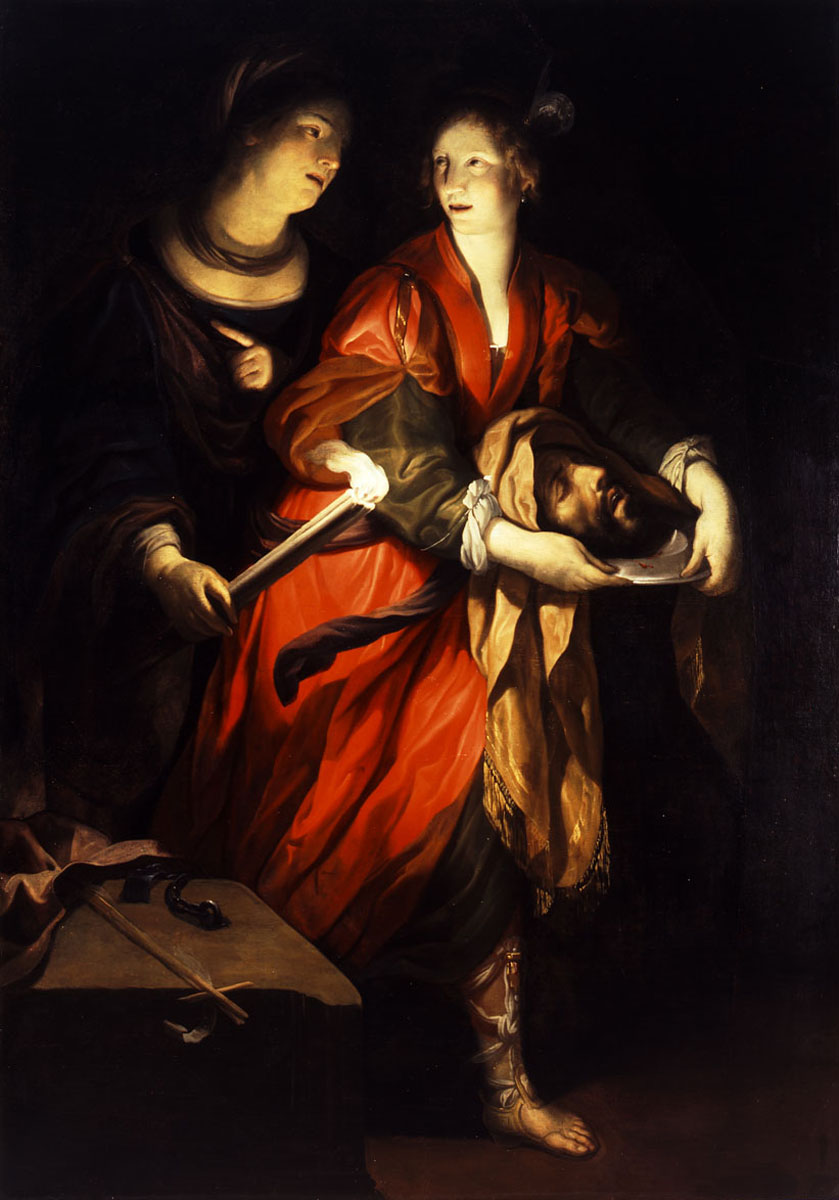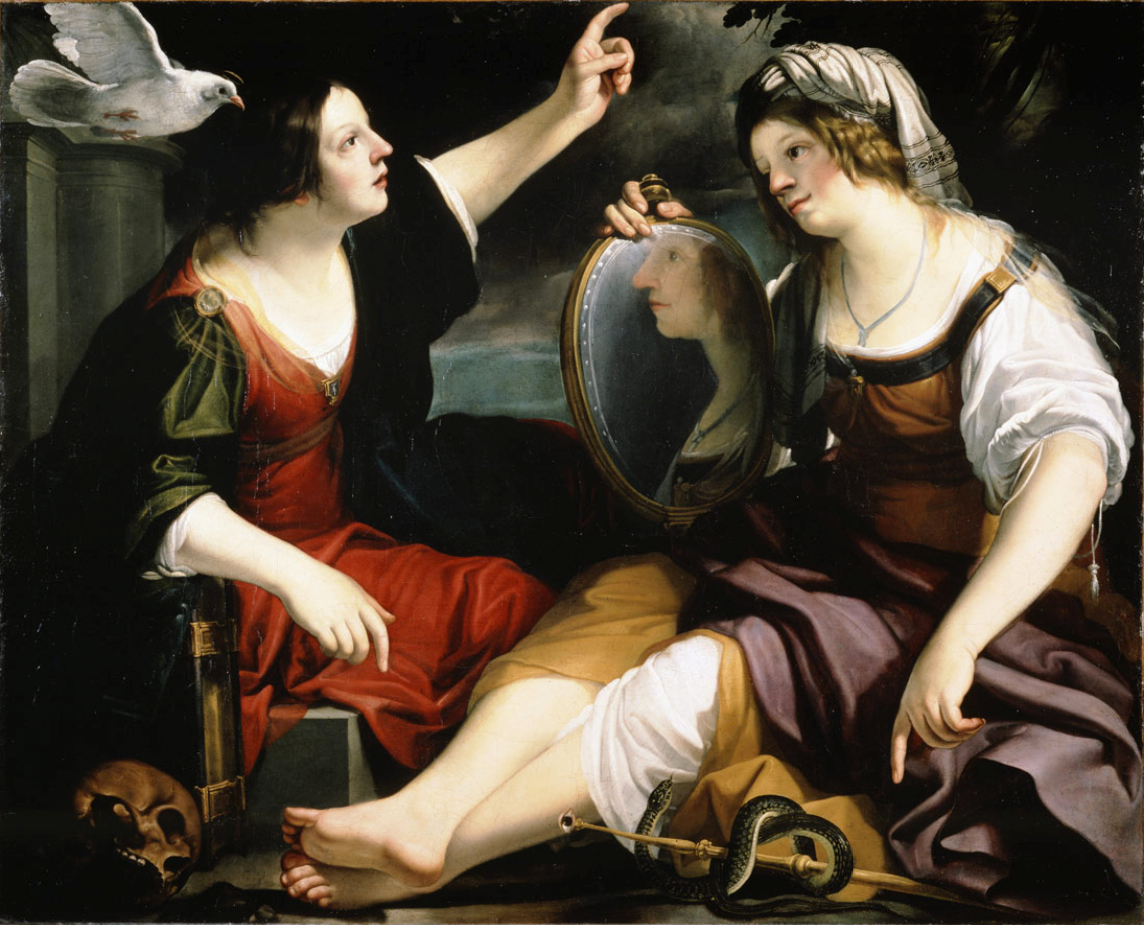Francesco Rustici on:
[Wikipedia]
[Google]
[Amazon]
 Francesco Rustici, called Il Rustichino (
Francesco Rustici, called Il Rustichino (
 He trained with his father who was the chief collaborator in the workshop of his brother-in-law Alessandro Casolani. Casolini himself was influenced by the work of
He trained with his father who was the chief collaborator in the workshop of his brother-in-law Alessandro Casolani. Casolini himself was influenced by the work of  Towards the end of his life he received commissions from
Towards the end of his life he received commissions from
Fondazione Cariplo, at Google Cultural Institute This is visible in the realistic and warm humanity with which he rendered his subjects.Francesco Rustici, ''La sapienza e la prudenza''
at the Museo San Donato Another important influence on his work was Gerrit van Honthorst, who was known for his mastery of nocturnal effects, which had earned him in Italy the nickname 'Gherardo delle Notti' ("Gerard of the nights"). Rustici's handling of light followed the Dutch-Flemish model of van Honthorst and blended it with a wholly Tuscan form of Rustichino's style appears generally to have been closer to the style of
Rustichino's style appears generally to have been closer to the style of
 Francesco Rustici, called Il Rustichino (
Francesco Rustici, called Il Rustichino (Siena
Siena ( , ; lat, Sena Iulia) is a city in Tuscany, Italy. It is the capital of the province of Siena.
The city is historically linked to commercial and banking activities, having been a major banking center until the 13th and 14th centur ...
, 1592 – Siena, 1626) was an Italian painter active in Siena. He worked on commissions for the local churches as well as from the Grand-Dukes of Tuscany. In his work he shows a preference for nocturnal effects which reveals the influence of Caravaggio and his followers, the so-called Caravaggisti
The Caravaggisti (or the "Caravagesques") were stylistic followers of the late 16th-century Italian Baroque painter Caravaggio. His influence on the new Baroque style that eventually emerged from Mannerism was profound. Caravaggio never establi ...
.
Life
Francesco Rustici was born in Siena in 1592 as the scion of an artistic family. His father Vincenzo Rustici as well as his uncle Cristoforo Rustici and his mother's brother Alessandro Casolani were all prominent painters active in Siena.Ladislav Daniel, ''The Florentines: art from the time of the Medici grand dukes'', Exhibition catalogue: Prague, Waldstein Riding School Gallery, 16.5.-18.8.2002, Olomouc, Museum of Arts, 26.9.-5.1.2003, Cheb, Gallery of Fine Arts, 14.2.-6.4.2003, published by National Gallery in Prague, 2002, p. 92 He trained with his father who was the chief collaborator in the workshop of his brother-in-law Alessandro Casolani. Casolini himself was influenced by the work of
He trained with his father who was the chief collaborator in the workshop of his brother-in-law Alessandro Casolani. Casolini himself was influenced by the work of Domenico Beccafumi
Domenico di Pace Beccafumi (1486May 18, 1551) was an Italian Renaissance- Mannerist painter active predominantly in Siena. He is considered one of the last undiluted representatives of the Sienese school of painting.
Biography
Domenico was bor ...
. While working in his father's workshop, Francesco Rustici's hand was initially difficult to distinguish from that of his father. His precocious talent was spotted by Giulio Mancini, a local physician, art collector and art dealer who mentioned the young artist in his ''Considerazioni sulla pittura'' ('Thoughts on painting'), written between 1617 and 1621. It is believed that the artist spent time in Rome in the period 1624-1625. In Rome he deepened his study of other Caravaggisti such as the Dutchman Gerrit van Honthorst.
Archduchess Maria Maddalena of Austria
Maria Maddalena of Austria (Maria Magdalena; 7 October 1589 – 1 November 1631) was Grand Duchess of Tuscany from the accession of her husband, Cosimo II, in 1609 until his death in 1621. With him, she had eight children, including a duchess of ...
who commissioned ''The death of Saint Mary Magdalene'' and ''The death of Lucretia''. He was also in contact with Lorenzo Magalotti, an important personage in the organization of the cultural projects of the Barberini
The House of Barberini are a family of the Italian nobility that rose to prominence in 17th century Rome. Their influence peaked with the election of Cardinal Maffeo Barberini to the papal throne in 1623, as Pope Urban VIII. Their urban palace ...
.Gianni Papi, ''Gherardo delle Notti: Quadri bizarrissimi e cene allegre'', Giunti Editore, p. 228-233
Work
The known oeuvre of Francesco Rustici is not numerous. His early works show the influence of his father and of Alessandro Casolani who painted in the SieneseMannerist
Mannerism, which may also be known as Late Renaissance, is a style in European art that emerged in the later years of the Italian High Renaissance around 1520, spreading by about 1530 and lasting until about the end of the 16th century in Ita ...
style.Enzo Carli, Carlo Bertelli, 'Catalogo della pittura italiana dal '300 al '700', G. Mondadori, 1985, p. 298 Later he came under the influence of the style of Caravaggio.Mary Magdalene (1620-1626), Francesco Rustici, known as RustichinoFondazione Cariplo, at Google Cultural Institute This is visible in the realistic and warm humanity with which he rendered his subjects.Francesco Rustici, ''La sapienza e la prudenza''
at the Museo San Donato Another important influence on his work was Gerrit van Honthorst, who was known for his mastery of nocturnal effects, which had earned him in Italy the nickname 'Gherardo delle Notti' ("Gerard of the nights"). Rustici's handling of light followed the Dutch-Flemish model of van Honthorst and blended it with a wholly Tuscan form of
Classicism
Classicism, in the arts, refers generally to a high regard for a classical period, classical antiquity in the Western tradition, as setting standards for taste which the classicists seek to emulate. In its purest form, classicism is an aesthet ...
. Rustichino painted a number of paintings which used the devise of the dark scene lit up by a single light source that was so favoured by tenebrists to create dramatic ''chiaroscuro
Chiaroscuro ( , ; ), in art, is the use of strong contrasts between light and dark, usually bold contrasts affecting a whole composition. It is also a technical term used by artists and art historians for the use of contrasts of light to achi ...
'' effects.
 Rustichino's style appears generally to have been closer to the style of
Rustichino's style appears generally to have been closer to the style of Orazio Gentileschi
Orazio Lomi Gentileschi (1563–1639) was an Italian painter. Born in Tuscany, he began his career in Rome, painting in a Mannerist style, much of his work consisting of painting the figures within the decorative schemes of other artists. After ...
, particularly in his use of bright and lively colours.Marco Pierini, 'Art in Siena', Scala, 2001, p. 158 However, he did not entirely embrace the naturalism of Gentileschi.
Notes
External links
{{DEFAULTSORT:Rustici, Francesco 1592 births 1625 deaths 17th-century Italian painters Italian male painters Painters from Siena Italian Renaissance painters Italian Baroque painters